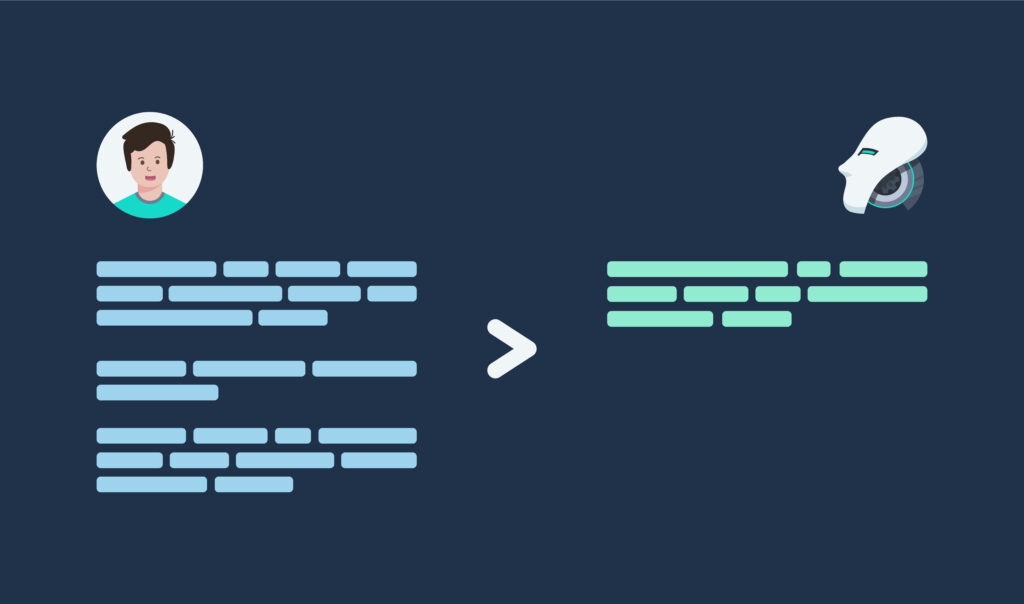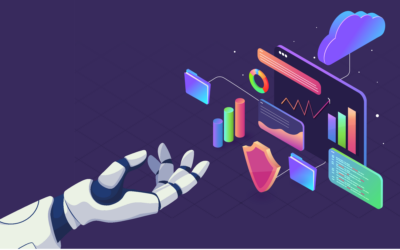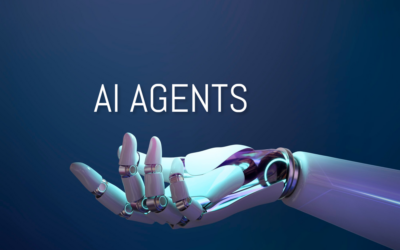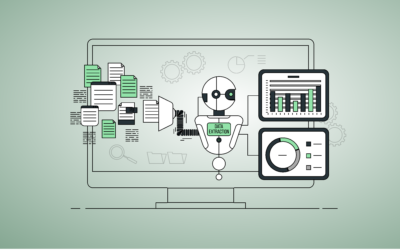Table of Content
In today’s fast-paced digital landscape, AI-powered applications are revolutionizing how businesses operate, compete, and innovate. Generative AI is not only streamlining internal processes and reducing operational costs—it is also unlocking entirely new value propositions that redefine customer engagement and service delivery.
By automating tasks such as content creation, personalizing user experiences at scale, and extracting actionable insights from unstructured data, generative AI is propelling companies to the forefront of digital transformation.
Driving Adoption
Generative AI is transforming business operations by not only accelerating development and innovation but also delivering tangible business benefits. Several converging trends are making generative AI applications more accessible and valuable than ever:
- Scalable Models: Smaller, efficient models that run on consumer-grade GPUs are democratizing access to high-performance AI, which rival larger mixture-of-experts systems. These models empower more developers to integrate advanced reasoning capabilities, accelerating product innovation and enabling companies to bring new products to market faster—unlocking new revenue streams.
- Open-Source Ecosystem: The launch of open-weight models—such as DeepSeek and QwQ-32B—reduces entry costs and offers greater customization flexibility. This enables companies to build diverse applications ranging from AI chatbots to enterprise search systems, providing competitive differentiation while lowering operational costs.
- Enhanced Reasoning: Advances in reinforcement learning (RL) boost AI models’ reasoning abilities in domains like mathematics, coding, and scientific inquiry. Combined with emerging techniques for building autonomous AI agents, this progress drives the automation of complex, multi-step tasks, thereby improving efficiency and productivity across the organization.
- Multimodal Innovations: Expanding architectural options now support integrated processing of text, images, and audio, enabling richer and more interactive user experiences. These multimodal interfaces not only enhance customer engagement but also contribute to higher user satisfaction and retention.
- Optimized Fine-Tuning: New fine-tuning methods enhance synthetic data generation while reducing biases in AI outputs, making these systems more reliable and better aligned with business needs. This reliability is crucial for scaling operations and managing risk.
- Supportive Infrastructure: A favorable regulatory climate and the growth of AI computing infrastructure further accelerate the adoption of generative AI across industries. With this robust foundation, organizations can implement rapid iteration cycles and streamline integration across their tech stack.
By leveraging these technical advancements, businesses can drive revenue growth by speeding up innovation and reducing time-to-market for new products. They also boost operational efficiency by automating routine tasks and enabling employees to focus on higher-value strategic initiatives.
Moreover, enhanced data insights and automated analytical processes help in early detection of issues, contributing to proactive risk management and improved decision-making. Together, these factors make generative AI a key driver of competitive advantage in today’s digital landscape.
This paper focuses on the practical application of generative AI in front-facing products and services. Rather than delving deeply into the underlying tech stack, we explore what generative AI applications are, how they function, and the tangible business value they can deliver.
Having explored the key trends that are driving the adoption of generative AI, let’s now take a closer look at what constitutes a generative AI application and how these innovative solutions are structured from end to end.
At Krasamo, our work in generative AI application development, integration strategies, and embedding AI into existing platforms reflects our commitment to harnessing these innovations to augment traditional functionalities and drive business success.
What is a Generative AI Application?
An end-to-end generative AI application is a comprehensive software solution that harnesses advanced AI models—whether proprietary or open-source—to deliver specific services directly to end users. These applications manage the entire process, from capturing user input and processing it through complex neural networks to generating and delivering the final output through a seamless, user-friendly interface.
Under the hood, such systems rely on robust model architectures, dynamic training pipelines, and orchestration layers that coordinate iterative workflows. This technical infrastructure includes optimized data ingestion, fine-tuning mechanisms, and integration frameworks that ensure scalability and reliability, all while abstracting the underlying complexity away from the user. This integrated approach not only delivers a smooth and intuitive experience but also empowers technical teams to customize and extend functionality to meet specific business needs.
Generative AI Application Types
Generative AI applications span a wide range of use cases that directly impact how businesses interact with technology. They include:
- Content Creation and Personalization: Tools that automatically generate text, images, and even code, enabling the rapid production of marketing materials, personalized customer experiences, and creative designs.
- Conversational Agents and Chatbots: Systems that use AI-driven natural language processing to power customer service, virtual assistance, and interactive interfaces. This includes advanced AI chatbots capable of handling complex queries and providing personalized support.
- Voice AI and Speech Processing: Applications that transform spoken language into actionable insights and responses, powering voice assistants, smart speakers, real-time translation, and voice-enabled interfaces. Learn more about AI Voice Agents.
- Data Analysis and Insights: Solutions that process unstructured data to extract actionable insights, automate reporting, and enhance decision-making. This includes sentiment analysis to gauge customer opinions and market trends.
- Multimodal Interfaces: Technologies that integrate text, visual, and audio inputs to create richer, more interactive user experiences across digital products.
Generative AI is also transforming specific business functions, including:
- AI Enterprise Search: Generative AI enhances enterprise search by understanding context and intent, providing more relevant and comprehensive results across internal data sources.
- Ecommerce AI: Generative AI is transforming ecommerce through personalized product recommendations, dynamic pricing, and automated content creation for product listings.
- Generative AI in HR: Applications in HR automate tasks like candidate screening, personalized training material generation, and employee onboarding, improving efficiency and experience.
This broad spectrum of generative AI applications demonstrates its transformative potential in redefining user interactions and streamlining business processes.
Envision your Generative AI Application
Organizations planning to build generative AI applications must approach the process with a vision that integrates user experience, technical innovation, and business objectives. Rather than treating generative AI as a plug-and-play technology, successful adoption starts with rethinking every interaction and process to utilize its transformative potential. Consider these guiding principles:
- User Experience
Rethink traditional interfaces by exploring how generative AI applications can incorporate various modalities—such as AI agents, search functionalities, and voice commands—to enhance interactions. Use service blueprints to map the user journey and identify key touchpoints where AI can deliver personalized, context-aware experiences. - Identify Core Use Cases
Focus on real-world “jobs to be done.” Ask critical questions: What repetitive tasks can be automated? Where can AI provide meaningful insights? How can creative content generation enhance engagement? Use these insights to pinpoint high-impact opportunities that align with your strategic goals. - Integrate Seamlessly into Existing Workflows
Achieve smooth integration of generative AI into your current tech stack by designing an end-to-end pipeline—from data input and model selection to output delivery—that is modular, scalable, and adaptable. - Leverage Open and Customizable Technologies: Embrace a flexible approach by evaluating both open-source and proprietary models. Fine-tune these models to meet your specific requirements, ensuring they are optimized for your unique business context.
- Iterate and Innovate Continuously:
Generative AI applications thrive on continuous learning. Plan for an iterative development process that includes rapid prototyping, testing, and feedback loops. Use early user insights to refine your model, ensuring the final product exceeds expectations.
By adopting this vision, organizations can transform the way they build and deploy generative AI applications—creating solutions that are not only technically robust but also deeply attuned to the needs of their users and business goals. This forward-thinking approach lays the foundation for innovations that drive competitive advantage in a rapidly evolving digital landscape.
AI UX for Generative AI Application Development
Crafting Agentic Interfaces
Artificial Intelligence is not only transforming backend systems but also revolutionizing how user experiences are conceived, built, and iterated upon. Today’s AI UX design transcends the mere addition of “smart features” and reimagines digital interactions from the ground up—shifting from a feature-centric mindset to an experience-centric one.
In this new landscape, interfaces are designed to be outcome-driven, where AI agents interpret user intent, anticipate needs, and autonomously execute tasks to deliver personalized, seamless experiences.
Key trends shaping AI UX design include:
- Accelerated Design Ideation: Generative AI tools empower designers to quickly move from abstract ideas to tangible mockups by generating a range of design variations from simple prompts. This speeds up the creative process and reduces repetitive tasks, allowing designers to focus on high-level decision-making and usability.
- Streamlined Design-to-Code Translation: AI-driven platforms now facilitate the conversion of visual designs directly into functional code. This reduces the friction between design and development teams, ensuring that the final product remains faithful to the original vision while cutting down on manual labor.
- Hyper-Personalized Interfaces: By analyzing both real-time context and historical user data, AI can create adaptive interfaces that respond to individual user behaviors and preferences. This results in a more engaging and customized experience for every user.
- The Rise of Agentic AI: Agentic AI redefines the user’s role by allowing systems to take proactive steps toward achieving desired outcomes. Instead of relying on step-by-step instructions, users articulate their goals, and the AI autonomously figures out the best pathway to fulfill them. This dynamic collaboration between humans and AI shifts designers’ roles from mere execution to strategic leadership.
- Evolving Designer Roles: As AI automates routine design tasks like wireframing and asset management, designers are freed to focus on guiding product vision, ensuring ethical standards, and championing inclusivity. This evolution fosters more holistic, user-centric experiences.
GenAI Dev is fundamentally reshaping the entire creative process. When planning your AI app development, ensure you have the right design team—or partner with a UI/UX design agency that is aligned with these new paradigms in AI development.
By embracing these cutting-edge trends, organizations can build adaptive, responsive interfaces that continuously evolve based on contextual insights and real-time data. This convergence of creativity and technical innovation sets a new standard for digital experiences in the AI era.
As generative AI applications continue to accelerate innovation through rapid prototyping and iterative development, a robust orchestration layer becomes critical. This layer seamlessly coordinates the dynamic workflows of AI agents, ensuring that the fast-paced machine learning processes integrate smoothly with the overall software architecture.
Generative AI Application Development–Orchestration Layer
Developing generative AI applications requires careful attention to the orchestration layer—a critical component that coordinates the dynamic, iterative workflows unique to AI development.
Unlike traditional software development, where processes tend to follow sequential, well-defined stages, the GenAI landscape is characterized by rapid prototyping and experimentation.
The orchestration layer manages the interplay between various AI agents, each responsible for tasks. These design patterns enable the system to iteratively refine outputs by having AI models evaluate and improve upon their own work, all while integrating seamlessly with other components of the tech stack.
This orchestration is vital because it bridges the gap between the exceptionally fast machine learning model development—where prototypes can be built in days or even hours—and the more traditional, slower aspects of software integration, deployment, and operations. It ensures that as generative AI models iterate at breakneck speeds, the overall system remains coherent, scalable, and aligned with business objectives.
In essence, the orchestration layer acts like the conductor of an orchestra, harmonizing the contributions of individual AI agents to produce a polished final product.
Furthermore, this new development paradigm emphasizes parallel workflows and rapid experimentation. While machine learning components are optimized for speed, the orchestration layer must compensate by streamlining integration, managing data flows, and coordinating multiple processes concurrently.
Krasamo’s Generative AI Development Services
At Krasamo, we specialize in turning innovative ideas into powerful AI-driven solutions. Our end-to-end services encompass generative AI application development, seamless integration strategies, and cutting-edge UI/UX design. We work with both proprietary and open-source models to create custom solutions that address your unique business needs. By leveraging our expertise in fast prototyping, orchestration, and continuous iteration, we empower organizations to accelerate time to market and gain a competitive edge in today’s dynamic digital landscape.
Learn more about how Krasamo can transform your business with advanced AI development solutions.












I must say, this blog post has really got me thinking about the vast potential of generative AI applications in various industries, including HR as mentioned. It’s fascinating to consider how these cutting-edge technologies can transform user interactions and streamline business processes. I’d love to hear more about the challenges organizations face when integrating generative AI into their workflows.